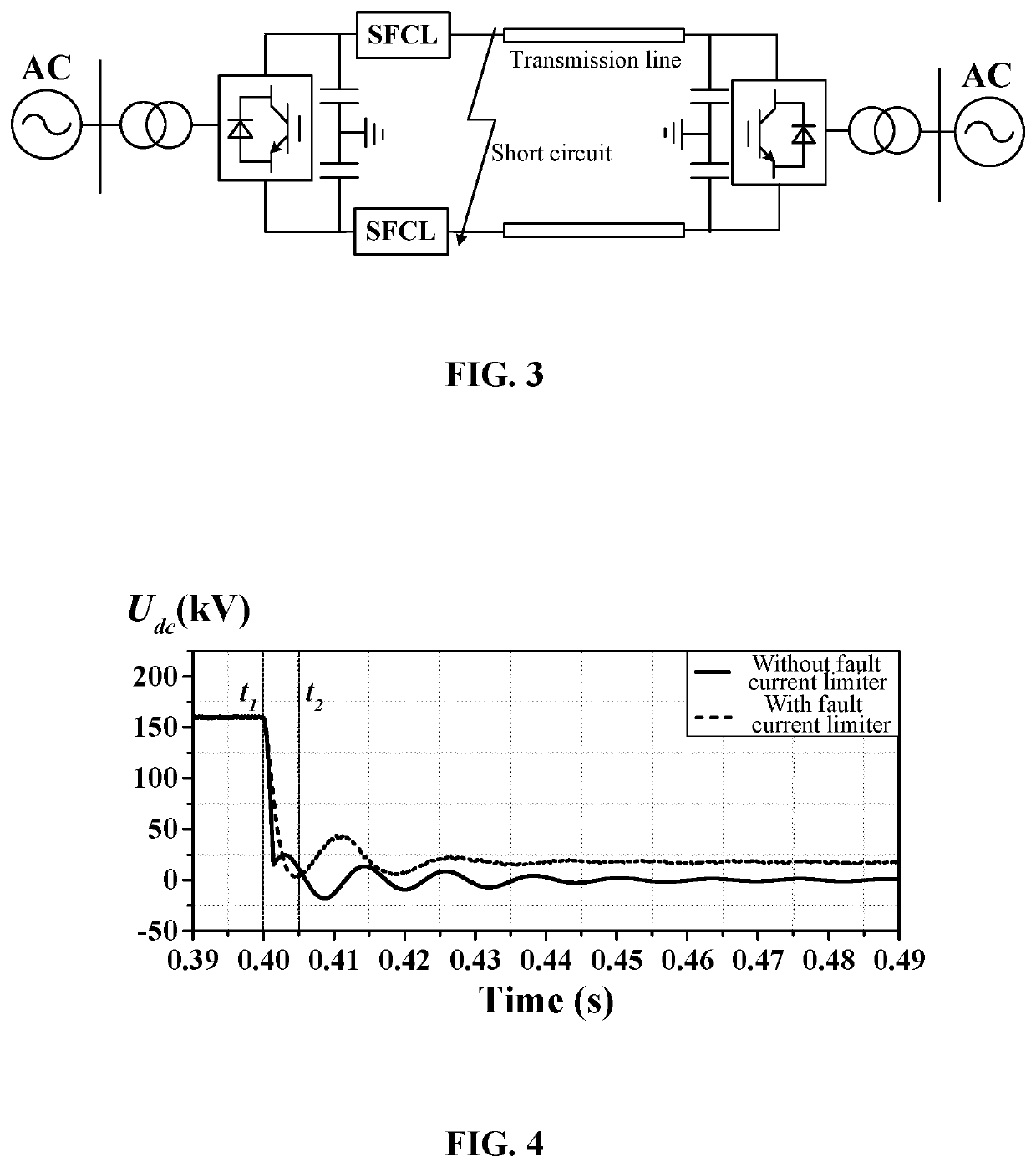Fault current limiter
a current limiter and fault technology, applied in the field of fault current limiters, can solve the problems of adversely affecting the reliability of the device, increasing short-circuit current, and high power loss, and achieve the effects of compact structure, fast energy transfer, and easy engineering
- Summary
- Abstract
- Description
- Claims
- Application Information
AI Technical Summary
Benefits of technology
Problems solved by technology
Method used
Image
Examples
Embodiment Construction
[0035]For further illustrating the invention, experiments detailing a hybrid superconducting fault current limiter are described below. It should be noted that the following examples are intended to describe and not to limit the invention.
[0036]A hybrid superconducting fault current limiter comprises two inductors, a direct current circuit breaker, a shunt resistor, a first fixed resistor, and metal oxide arresters. The inductors comprise wound superconducting wires. The inductors have identical number of windings and identical structure. Magnetic fluxes of the inductors are forward coupled, and the inductors are connected in parallel to form a superconducting inductor structure. The direct current circuit breaker and the superconducting inductor structure are connected in series to form a series branch. The shunt resistor is connected in parallel to the series branch. The first fixed resistor is connected in parallel to the direct current circuit breaker. The metal oxide arresters ...
PUM
| Property | Measurement | Unit |
|---|---|---|
| peak current | aaaaa | aaaaa |
| equivalent resistance | aaaaa | aaaaa |
| equivalent resistance | aaaaa | aaaaa |
Abstract
Description
Claims
Application Information
 Login to View More
Login to View More - R&D
- Intellectual Property
- Life Sciences
- Materials
- Tech Scout
- Unparalleled Data Quality
- Higher Quality Content
- 60% Fewer Hallucinations
Browse by: Latest US Patents, China's latest patents, Technical Efficacy Thesaurus, Application Domain, Technology Topic, Popular Technical Reports.
© 2025 PatSnap. All rights reserved.Legal|Privacy policy|Modern Slavery Act Transparency Statement|Sitemap|About US| Contact US: help@patsnap.com



